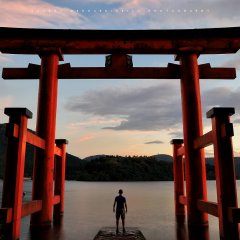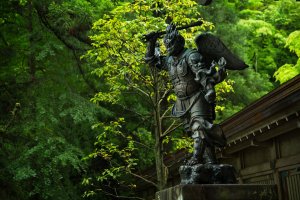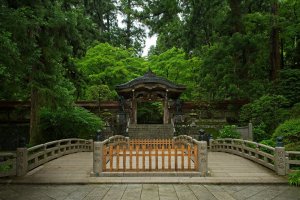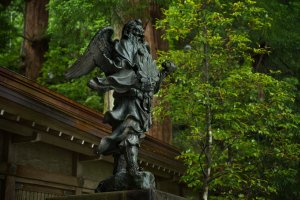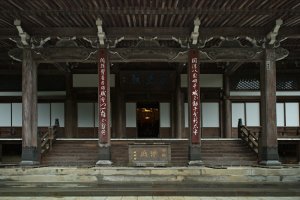It's the middle of June and the rainy season has arrived. Believe it or not, this is one of the best times to visit Saijoji temple.
A legend says that in 1393 an eagle seized the ceremonial garment of Ryoan Emyo Zenji of the Soto Zen Buddhist School while it was drying in the sun. The monk decided to follow the bird and finally found the vest hanging up on a tree in the Ashigara mountains. Unable to retrieve it he then decided to sit there and meditate. After a while a gust of wind blew the vest down right onto his shoulders. He interpreted that as a sign and built the temple right there in 1394.
From the very first step of the stairs leading to the entrance the atmosphere is absolutely mystical: everything is surrounded by huge ancient trees, a little stream fills the place with the constant sound of flowing water and today the rain just adds an extra shine to all the leaves and stones. Climbing up the steps brings you to the first gate, a little bridge on the left leads to another path into the forest and the lichen-covered stone inscriptions guide you all along the way. On the far end you should now be able to see the main complex protected by the giant silent cedars for more than 600 years. Walking through the main gate leads you into the courtyard where you can enjoy the view of the beautiful main temple and garden.
I find that the best way to appreciate places like this is to just wander around in the labyrinth of walkways, streams and buildings; you will find beautifully decorated lamps, golden altars lit by warm lights, small waterfalls and the green shiny moss covering everything.
A peculiarity of this temple is what I personally term a "geta garden", filled with sculptures of the traditional Japanese footwear in every size and material in a small area near the Goshin-den pavilion. It is even said that the largest pair of geta in the world are located here.
When you've finished exploring around the main complex it will be time for the last climb, the one that will make you think, why? After crossing a striking double bridge a couple of stairs lead to a very long and steep stairway. With huge cedar trees towering on both sides and the two bronze Tengu watching you, the view is impressive in every sense. Tengu are known as guardians in Japanese folklore. Your effort of climbing to the top is rewarded with an elegant temple where you can make an offer to the gods and where you can enter the main room and pray with the gentle pitter patter of the rain falling over the roof and the warmth of a summer afternoon.
Shukubo (temple stay): If you are not on a budget and you want to experience a day in the life of a monk, you should consider staying one or more nights at the temple. You will be able to participate in all the Zen practices like meditation or hand copying sutras and of course eating the delicious vegetarian cuisine (shōjin ryōri).
Tip: If you do go on a rainy day, don't forget to wear comfortable shoes especially if you decide to walk all the way up from the train station and be careful not to slip over the wet stone steps.

